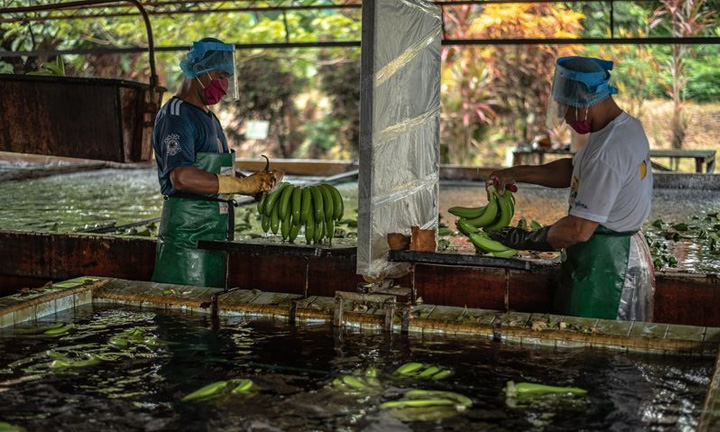SOURCE: Stephan Kueffner, Bloomberg
Ecuador, the world’s biggest banana exporter, is on high alert for its vital crop as neighboring Peru grapples with an outbreak of a fungus deadly to the tropical fruit.
“We’ve reinforced practically everything,” Agriculture Minister Xavier Lazo said in an interview, after confirming with Peru’s government of an outbreak of the Fusarium TR4 fungus, which causes the devastating banana wilt, near its southern border with Peru.
Ecuador is sandwiched between two South American nations that have a presence of the incurable banana affliction, with the fungus first reaching Colombia in 2019. Ecuador has plantations less than 300 kilometers (186 miles) from the northern Peru region where the fungus was confirmed on April 12.
The banana woes are just the latest example of a supply threat to crops as a cold snap slows U.S. grain planting and dry conditions plague corn in Brazil. That could all mean even higher food prices at a time when global grocery costs are spiking.
In Ecuador, Lazo himself is a banana grower and has supervised measures along the border that include setting up container disinfection stations along main roads and four simulations to train officials. He has been in frequent contact with his Peruvian counterpart, Federico Tenorio, to coordinate efforts.
Ecuador also installed an Internet-connected microscope at its main border facility in the region where most trade with Peru crosses to quickly identify threats. Ecuador is offering free lab testing and training of proper sanitary procedures to plantations to stop the spread.
“The best business for Ecuador will be that the fungus doesn’t enter,” Lazo said, although officials are preparing for eventual domestic containment.
Bananas, Ecuador’s biggest crop, have become even more important for the country’s reeling economy, which plunged 7.8% last year as its struggled through the Covid-19 pandemic. The nation exported 7.3 million metric tons of bananas last year, up 5.8% from 2019, to bring in a record $3.7 billion, according to Lazo.
The minister called the banana industry “a strategic chain in the country” benefiting two million Ecuadorians, or 17% of the workforce, while providing export dollars.
A Latin American outbreak in the 1950s wiped out the Gros Michel banana variety, so any spread of the fungus also puts its successor, the Cavendish, at risk. Finding a replacement variety would mean tackling multiple issues, such as maintaining the taste and robust shelf life for global markets, Lazo said. That would be most likely through genetic engineering, which is banned in Ecuador.

